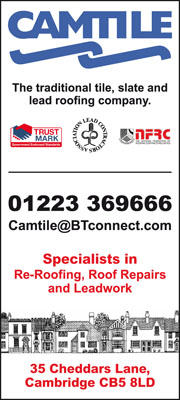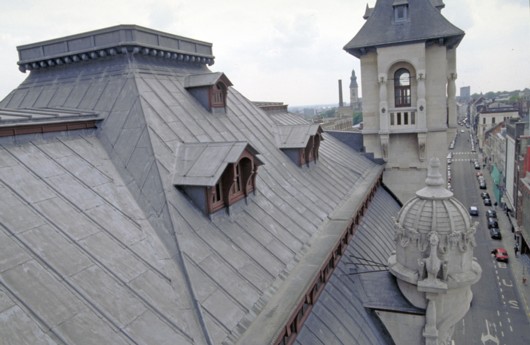Lead industry mounts a Europe-wide offensive
 Over the years the lead sheet industry has carried out numerous campaigns to explain the qualities and advantages that the material has to offer – its sustainability, its weatherproofing qualities, its versatility and its aesthetic appeal among them.
Over the years the lead sheet industry has carried out numerous campaigns to explain the qualities and advantages that the material has to offer – its sustainability, its weatherproofing qualities, its versatility and its aesthetic appeal among them.
The issue is not just pertinent in the UK, however; lead has been in use as a building material throughout Europe since at least Roman times. And the campaign to promote its qualities is also Europe-wide.
| The European Lead Sheet Industry Association (ELSIA) is a federation of industry bodies across the continent, including our own Lead Sheet Association. In April ELSIA published a technical brochure to address what it termed “…public concern regarding its [lead sheet’s] suitability as a roofing material” that arise from time to time. ELSIA’s aim, it states, is to dispel the myths and focus on the facts. Those facts are: * Properly installed and handled, lead sheet poses no risk to the environment or people. * Lead sheet outperforms all alternative man-made materials in its field. * More than 95% of lead used in the manufacture of lead sheet comes from recycling. * The relatively low melting point of lead, 327°C, means the recycling process has a minimal environmental impact. * Lead sheet affords attractive, permanent protection against the weather. * The proven life of lead sheet is hundreds of years. Over the past several years the European Lead Sheet Industry Association (ELSIA) has invested in independent research to investigate the validity of public concerns. Details of the research findings are presented in the brochure. In brief, it says that, contrary to public perception, lead sheet poses no risk to the environment, even when water run-off is taken into account. Nor, provided that it is correctly applied in compliance with standard construction industry practice, does it present any risk to human beings. Furthermore, providing simple hygienic precautions are observed, people who handle significant quantities of lead do not expose themselves to occupational health risks. Finally, all the alternative products are more damaging to the environment than lead sheet and have a higher total cost. “The aim of ELSIA is to confront any negative perceptions surrounding the use of lead sheet and to inform the public using well-founded research,” said ELSIA chairman Ben Travers. “Many people just don’t realise that lead sheet used for roofing is both safe and very green – it is highly durable and is recycled time after time. Lobbyists for alternative products with shorter lives – and that cannot be recycled – are ill-informed, and we should try to redress that.” • The technical brochure is available to download in PDF format on the ELSIA website, www.elsia.eu. ‘Excellent’ heritage roofers On 15 May Telford, in Shropshire, played host to the annual Excellence in Roofing Awards, at which the industry recognised outstanding achievement by contractors in all major roofing disciplines. For the first time the award’s organisers, the National Federation of Roofing Contractors (NFRC) was joined by the Lead Contractors’ Association, which presented its own Murdoch Award and Murdoch Sponsor’s Award to D Blake and Co for the McManus Galleries in Dundee and Norfolk Sheet Lead for Langley School respectively (see E&HW issue 37). Among the NFRC awards being presented was for the Heritage category. The winner was J Wright Roofing Ltd for the Victoria Law Courts in Birmingham. Restoration of the striking terracotta building, the foundation stone for which was laid by Queen Victoria during her Diamond Year in 1897, has been an on-going project for a number of years. The re-roofing project was carried out by Wright’s for main contractor G F Tomlinson. Acorn Lead Roofing was also honoured, in the Fully Supported Metal Roofing category, for bandstand projects, as was Gable UK Ltd, which won the Roof Sheeting category for Bovington Tank Museum, and Miller Roofing in the Single Ply category for the National Galleries of Scotland.
Learning about lead Historic Lead was the subject of a recent training day at Cressing Temple in Essex, a Templar site that has its origins in the 12th century and is the site of the two best Templar barns in Europe. The theme was: “Good specification is essential to good lead work.” The day looked at historic lead, its features and how it can be repaired. The course was run by Essex Works, the historic building and conservation team at Essex County Council. The team has been running courses at the site since 1997. |










